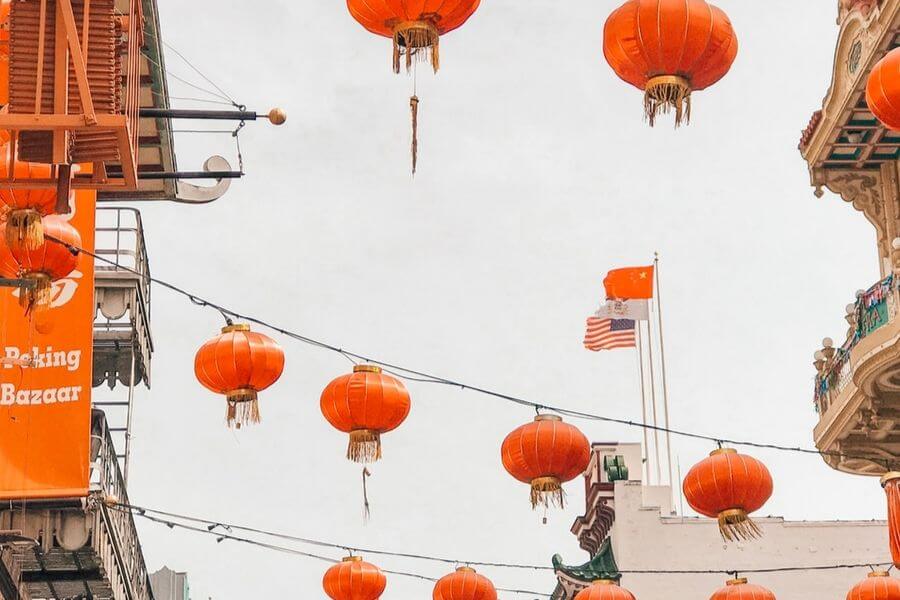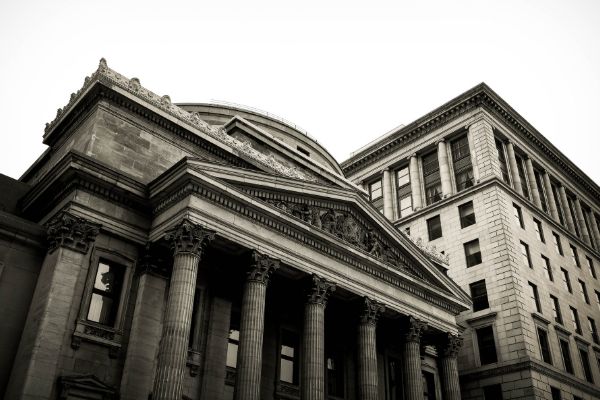
* The author would like to thank J.D. student Rachel Schiff, Associate Professor Wenliang Zhang, Dr. Meng Yu and Mr. Frank Chen for their helpful advice. All the errors, of course, are my own.
In our last blog, we discussed the In Re Sealed Case[1], in which the D.C. Circuit upheld the contempt order against three Chinese banks for their refusal to execute the discovery subpoena. That case epitomized the conflict of laws between China and U.S. in judicial assistance. Since 2010, the U.S. courts have frequently compelled Chinese banks to provide bank documents in discovery, despite the fact that this violates Chinese bank secrecy law. The continuing conflicts lead to a lose-lose situation in which neither the Chinese banks who are asked to provide documents nor the litigants who request the discovery get any benefits. Meanwhile, the increasing conflicts also go against the common interest between China and the United States. To solve this problem, China and the United States must rebuild an effective cooperation mechanism between the two countries. For example, the U.S. courts could give more preference to the multilateral judicial cooperation channels when taking evidence from Chinese banks. On the other hand, the Chinese judicial authorities should respond U.S. courts’ evidence request timely and effectively. Both countries must go back to the negotiating table for a more detailed bilateral agreement, especially in the field of combating terrorism, money laundering, tax evasion and intellectual property infringement where both countries share common interest.
I. The Growing Conflicts Between China and U.S. in Evidence Taking Cooperation
When seeking to obtain evidence located in China, the U.S. courts have two choices: utilizing the discovery procedure pursuant to Federal Rules of Civil/Criminal Procedure, or participating in judicial cooperation channels provided by the Convention on the Taking of Evidence Abroad in Civil or Commercial Matters (“Hague Evidence Convention”) and Agreement on Mutual Legal Assistance in Criminal Matters between China and the United States (“AMLA”). Recent cases show that U.S. courts tend to bypass the judicial cooperation channels by compelling Chinese banks to execute discovery order.
A. The Extraterritorial Application of U.S. Discovery in Evidence Taking
The extraterritorial application of discovery often leads to conflict of laws between China and the United States. According to U.S. federal laws, parties may obtain discovery regarding any non-privileged matter that is relevant to any party’s claim or defense.[2] Meanwhile, a subpoena may command non-parties to produce designated documents, electronically stored information, or tangible things in that person’s possession, custody, or control.[3] However, under Chinese law, obtaining evidence “shall be requested and provided through the channels prescribed in an international treaty concluded or acceded to by China; or in absence of such a treaty, shall be requested and provided through diplomatic channels. Absent these circumstances or permission from an authorized agency of China, no foreign authority or individual may obtain evidence in China”.[4]Also, Chinese financial institutions are refrained from disclosing bank customers’ information to foreign courts according to Chinese laws.[5] Therefore, in cases where the Chinese banks request documents according to the discovery procedure, the banks may find themselves in a Catch-22: either follow the discovery and violate Chinese law or be held in contempt by a U.S. court for refusing discovery.
B. The Judicial Cooperation Channels Between U.S. and China in Evidence Taking
a. The Hague Evidence Convention in Civil or Commercial Matters
In cases related to civil or commercial matters, the U.S. courts can obtain evidence through the Hague Evidence Convention. The Hague Evidence Convention established “a system for obtaining evidence located abroad that would be “tolerable” to the state executing the request and would produce evidence “utilizable” in the requesting state”.[6] Under the convention(both the U.S. and China are contracting States), each Contracting State shall designate a Central Authority for receiving and handling a letter of request from foreign countries. In practice, the Hague Evidence Convention faces many problems. For example, even though the Contracting State is obligated to execute the letter of request expeditiously, obtaining evidence sometimes can be “unduly time consuming and expensive” under the Hague Evidence Convention.[7]
b. The AMLA in Criminal Matters
In criminal matters, China and the U.S. drafted the AMLA in June 2010, which provides “a channel specifically designed to allow the U.S. government to obtain exactly the types of records it seeks”.[8] Like the Hague Evidence Convention, the AMLA requires both countries to designate a Central Authority that is responsible for receiving and transferring letters of request. However, the process can also be time-consuming and is often criticized as being an “arduous process”, which “has deterred successful cooperation on economic crimes between the United States and China”.[9]
c. The Non-exclusiveness of the Hague Evidence Convention and AMLA
Since evidence may be sought through either U.S discovery methods or judicial cooperation channels, a question arises: should the U.S. courts give first resort to the judicial cooperation channels to obtain evidence in China? In Societe Nationale Industrielle Aerospatiale v. United States District Court for the Southern District of Iowa (“Aerospatiale”), the Supreme Court of Unites States said no. In a 5:4 decision, the Supreme Court held the Hague Evidence Convention was neither an exclusive nor a mandatory means of obtaining discovery abroad; rather, the Convention provided another option, but this option did not displace the Federal Rules when conducting discovery in United States litigation.[10] The AMLA faces the same fate. The D.C. Circuit held in In Re Sealed Case that “nothing in the AMLA, however, designates it as the exclusive means of obtaining evidence in a criminal investigation”.[11] Thus, the U.S. courts have discretion in deciding through which way to obtain evidence abroad.
C. From Divergence to Convergence: U.S. Courts’ Attitudes towards Discovery Against Chinese Banks
Another question arises when taking evidence in China: how does the court determine whether to use the discovery procedure or the judicial cooperation channels? Regarding this question, the U.S. courts have followed a five-factor comity analysis set forth in the Restatement (Third) of Foreign Relations Law of the United States § 442(1)(c) since Aerospatiale.[12] In the past ten years, the U.S. courts shifted attitude towards whether to compel non-party Chinese banks to follow discovery procedure in violation of Chinese laws.
Early on, U.S. courts’ holdings “spanned a wide spectrum” in deciding whether to compel Chinese banks to discover required documents.[13] In 2010, the Southern District Court of New York (S.D.N.Y.) requested Chinese banks provide their customers’ bank information in three separate cases. All the three cases shared almost the same facts: luxury brands Tiffany and Gucci filed lawsuits against several Chinese sellers who manufacture and sell counterfeit goods online, and then asked Chinese banks to provide defendants’ bank documents so as to indentify the infringers and calculate their unlawful profits.[14] In Tiffany v. Andrew Qi, the court held that plaintiffs should obtain the documents through the Hague Evidence Convention rather than through a discovery procedure. A month later in Gucci v. Weixing Li, however, Judge Sullivan drew a different conclusion by compelling Bank of China (BOC) to provide bank documents. Meanwhile, he held that obtaining evidence from China via the Hague Evidence Convention was not a “viable alternative”.[15] But the story didn’t end here. In Tiffany v. Forbse, the court decision was split into two parts: BOC was required to produce documents under the discovery procedure, while the other two Chinese banks can only be reached through Hague Evidence Convention. Despite similar facts, the cases demonstrate the inconsistency across U.S. courts even in the same district.
After the above cases, U.S. courts have increasingly compelled discovery subpoenas in violation of Chinese law. In September 2015, Judge Sullivan reconfirmed his decision to compel BOC to turn over the bank documents in Gucci v. Weixing Li after the case was remanded from the Second Circuit.[16] In Nike v. Wu, Judge McMahon granted the discovery subpoena for account information related to counterfeit defendants. At the same time, the court pointed out that China’s bank secrecy laws were not a “get out of jail free” card.[17] On 30 July 2019, the United States Court of Appeals for the District of Columbia Circuit affirmed the district court’s contempt orders against three Chinese banks for their failure to provide required bank documents in connection with a grand jury investigation. The above cases covered both pre-trial discovery, like Gucci v. Weixing Li, and post-judgment discovery as in Nike v. Wu, showing U.S. courts’ preference to the discovery procedure in taking of evidence from China.
In conclusion, the U.S. courts have the discretion to decide whether to utilize discovery procedures or judicial cooperation channels to obtain evidence abroad. For the Chinese judicial authorities, however, the evidence can only be sought through Hague Evidence Convention or AMLA. Conflict of laws will arise if the U.S. courts seek to bypass the bilateral judicial cooperation channels by compelling discovery subpoena. In recent years, the U.S. courts showed more deference to the discovery procedure, leading to the increasing conflicts between China and U.S. in evidence taking cooperation.
II. A Lose-Lose Situation Resulted from the Court-Ordered Law Breaking
A. Why is it a no-win situation?
U.S. courts’ compelling discovery in violation of foreign laws has been referred to as “court-ordered law breaking” in some academic literature.[18] And the “court-ordered law breaking” in fact leads to a no-win situation.
First, Chinese banks are most impacted by the increasing court-ordered law breaking. The banks who are ordered to provide bank documents often find themselves in a Catch-22: risk civil and criminal penalties for disclosing customers’ bank information or be held in contempt of U.S. court. In Gucci v. Weixing Li, Judge Sullivan held BOC in contempt of U.S. court and imposed a $50,000 daily fine for the bank’s refusal of discovery. Additionally, BOC spent more than 550,000 RMB for retaining attorneys and expert witness in the course of discovery procedure, and the bank’s claims to recover the above damages was denied by Chinese court.[19] In In Re Sealed Case, three Chinese banks were held in contempt of U.S. Court and may even risk losing access to U.S. financial system.[20] In a word, the non-party banks who have no relationship with the disputes have to bear the legal risks resulting from the conflict of laws between two countries.
Secondly, the requesting parties seldom get the benefits of discovery due to the delay caused during the discovery procedure. Theoretically, the discovery procedure would be efficient and time-saving. However, when the non-party banks were requested to provide documents in violation of their home country’s law, the banks would usually contest the viability of discovery before the court. If the court compelled the non-party banks to do so, the banks can also appeal and the whole procedure can be very time consuming. In Gucci. v. Weixing Li, for instance, the plaintiff served discovery subpoena to BOC on 13 July 2010, while BOC didn’t turn over the documents until 2016.[21] The whole discovery procedure took more than 5 years. By contrast, in Tiffany v. Andrew Qi where evidence was ordered through the Hague Evidence Convention, the Chinese judicial authority provided the bank documents to the plaintiff within nine months, significantly less time compared with Gucci v. Weixing Li.[22] Therefore, the court-ordered law breaking sometime not only will not facilitate the evidence taking process, but may be counterproductive.
Last but not least, the court-ordered law breaking also goes against the common interests of China and the United States. The cases in which Chinese banks are caught in a Catch 22 often touch upon issues like combating transnational crimes or illegal civil activities where both China and U.S. share common interest. For instance, the disputes in Tiffany v. Andrew Qi, Tiffany v. Forbse and Gucci v. Weixing Li all arose out of IP infringement; Wultz v. Bank of China concerned issues of terrorism activities. The U.S. has significant interest in enforcing Lanham Act and protecting its national security interest. So does China. In recent years, Chinese government has taken extensive measures to promote global IP protection[23] and combat terrorism activities[24]. With the globalization of economy, combating terrorism activities and protecting IP calls for more cooperation of the international community. In the above cases, sharing bank information effectively between China and U.S. would contribute significantly to identify the defendants, locate their assets and cut off their financial supply, thereby protecting both countries’ interests in protecting IP and national security. At the current stage, however, the court-ordered law breaking didn’t help to protect the common interests, but may hamper the cooperation and cause delay as shown in Gucci v. Weixing Li.
B. What leads to the no-win situation?
As pointed out in Restatement (Third) of Foreign Relations Law, “no aspect of the extension of the American legal system beyond the territorial frontier of the United States has given rise to so much friction”.[25] Many reasons lead to the conflict of laws between China and U.S. in evidence taking, and I argue here that the most important reason is the lack of mutual trust.
Normally, Chinese judicial authorities refused to execute the discovery request for fear of disclosing national secrets and business secrets. In September 2018, I had the opportunity to conduct my research at China’s Ministry of Justice, and I noticed that the District Court of Columbia once requested Huawei and ZTE to provide many confidential documents through the Hague Evidence Convention, including documents revealing the demographics of the users of both companies’ 3G and 4G wireless communication devices in the United States.[26] The Chinese judicial authority refused to execute the request based on the Article 23 declarations of Hague Evidence, pointing out the scope of evidence obtained is too broad which does not comply with Chinese declaration.[27] In fact, many U.S. courts’ evidence requests were refused by Chinese judicial authorities because they worry about the disclosing of business or national secrets during the discovery process.
The history of Chinese judicial authorities refusals intensifies the U.S. courts’ determination to compel discovery subpoenas in violation of Chinese law. In In Re Sealed Case, the District Court of Columbia held that “over the last decade, the United States has made approximately 50 AMLA requests to China for bank records, only 15 of which have produced any response. Of those 15, most have been incomplete, untimely, or failed to include certification needed for the records’ admissibility in a United States Court”.[28] And also in Nike v. Wu, the court pointed out that “the resort to Hague Evidence Convention was unlikely to produce the requested materials”.[29] Because of the unsatisfied cooperation history with Chinese judicial authority, the U.S. courts tend to believe the judicial cooperation channels with China are unlikely to produce the requested materials within a reasonable timeframe.
Above all, both China and the U.S. have significant interests in sharing financial information, especially in the area of combating transnational financial crimes. However, due to the different evidence retrieval systems between the two countries, Chinese judicial authorities worry about the leaking of confidential information during the U.S. discovery procedure. The U.S. courts, at the same time, are not satisfied with Chinese judicial authorities’ low execution rate under the existing judicial cooperation channels. The lack of mutual trust finally leads to the increasing conflict of laws and a lose-lose situation.
III. The Way Out of Dilemma: Rebuilding Mutual Trust
As the world becomes increasingly globalised and transnational activities become the norm, the international community needs more cooperation rather than conflicts. Regarding the no-win situation between China and U.S., improving the existing judicial cooperation mechanism based on mutual trust can be the best way to get out of the dilemma.
First of all, the U.S. courts should give more preference to the judicial cooperation channels [such as the Hague Evidence Convention or AMLA] when seeking evidence located in China. The Chinese Ministry of Justice have expressed its determination to coordinate in facilitating the evidence request from U.S. courts. For instance, in 2019, Chinese Ministry of Justice addressed a letter to the U.S. court in In Re Sealed Case, stating that the Ministry of Justice would “timely review and handle the requests for assistance sought by (Department of Justice of the United States of America) in accordance with the AMLA and applicable domestic laws. For the request in line with the AMLA, China will provide the assistance to the Unites States accordingly”.[30] Given that circumstance, the U.S. courts need to rebuild its trust towards the cooperation with Chinese judicial authorities’ and show more deference to bilateral or multilateral cooperation mechanisms.
Moreover, increasing consensus and deepening judicial cooperation in exchanging financial information can be the best problem-solving method. Exchanging bank information is playing an increasing important role in combating transnational tax evasion, terrorism activities, money laundering and so on. There is no doubt that both China and U.S. share significant interest in these areas. Therefore, both parties are supposed to go back to the negotiating table and build a new framework for cooperation because the current framework, namely the Hague Evidence Convention and the AMLA, does not provide enough support for the exchanging of bank information. Regarding this point, a comprehensive bilateral agreement on bank information exchange can be a feasible way to solve the no-win situation.
References:
[1] The In Re Sealed Case concerns the grand jury investigation towards a Hong Kong based company that was suspected of violating America’s economic sanctions against North Korea. During the investigation, three Chinese banks were requested to provide bank documents related to the Hong Kong company. Three Chinese banks refused to provide because of Chinese bank secrecy law, and thus was held in contempt of U.S. court. See In Re Sealed Case, No. 19-5068 (D.C. Cir. 2019), available at: https://www.cadc.uscourts.gov/internet/opinions.nsf/6E2FAD8DB7F6B3568525844E004D7A26/$file/19-5068-1800815.pdf.
[2] See Federal Rules of Civil Procedure, Art. 26(b)(1).
[3] See F. R. C. P., Art. 45(a)(1)(A)(iii); see also Federal Rules of Criminal Procedure, Art. 17(c).
[4] See China’s Civil Procedure Law, Art. 277.
[5] For example, Article 24 of the Corporate Deposit Regulations provides that a financial institution shall keep secret the deposits of corporate depositors; Article 28 of the Corporate Deposit Regulations stipulates that savings institutions...shall keep secret depositors’ savings and related information. A commercial bank that discloses information about the deposit of a corporate depositor in violation of the provisions of Article 24, or looks into, freezes or debits the funds of a corporate depositor on behalf of others in violation of Chinese law, can be punished according to Article 73 of the Law of the People’s Republic of China on Commercial Banks. Art. 73(3) of China’s Commercial Banks Law stipulates that “A commercial bank shall assume liability for payment of default interest and other civil liability if the property of depositors or other clients is damaged as a result of the commercial bank’s:...(3) illegal inquiries into, freezing, withholding or transfer of the savings deposits of individuals or the deposits of units”.
[6] See Philip W. Amram, Explanatory Report on The Convention on Taking Evidence Abroad in Civil or Commercial Matters, S. EXEC. Doc. A 92-2, p. 11 (1972).
[7] See Societe Nationale Industrielle Aerospatiale v. United States District Court for the Southern District of Iowa, 482 U.S. 522, 542 (1987).
[8] See In Re Sealed Case, No. 19-5068, p. 37 (D.C. Cir. 2019).
[9] See Eleanor Ross, Increasing United States–China Cooperation on Anti-Corruption: Reforming Mutual Legal Assistance, 86 Geo. Wash. L. Rev. 839, 851 (2018).
[10] See Abigail West, A Meaningful Opportunity to Comply, 63 U. Kan. L. Rev. 189, 195 (2014-2015).
[11] See In Re Sealed Case, No. 19-5068, p. 37 (D.C. Cir. 2019).
[12] The five factors to be considered by the courts are: (i) “the importance to the investigation or litigation of the documents or other information requested”; (ii) “the degree of specificity of the request;” (iii) “whether the information originated in the United States”; (iv) “the availability of alternative means of securing the information”; and (v) “the extent to which noncompliance with the request would undermine important interests of the United States, or compliance with the request would undermine important interests of the state where the information is located”. In addition, some courts may also consider “the hardship of compliance on the party or witness from whom discovery is sought” and “the good faith of the party resisting discovery”. See Gucci v. Weixing Li, 2011 WL 6156936 at 5(2011).
[13] See Megan C. Chang & Terry E. Chang, Brand Name Replicas And Bank Secrecy: Exploring Attitudes and Anxieties Towards Chinese Banks in the Tiffany and Gucci Case, 7 Brook. J. Corp. Fin. & Com. L. 425,425 (2013).
[14] The Lanham Act establishes civil remedies for trademark infringement under which the plaintiff can claim the recovery of defendant’s profits. 15 U.S.C. § 1117 (a) provides “When a violation of any right of the registrant of a mark registered in the Patent and Trademark Office, a violation under section 1125(a) or (d) of this title, or a willful violation under section 1125(c) of this title, shall have been established in any civil action arising under this chapter, the plaintiff shall be entitled...to recover (1) defendant's profits, (2) any damages sustained by the plaintiff, and (3) the costs of the action...”.
[15] See Gucci Am., Inc. v. Weixing Li, 2011 WL 6156936, at 8-9 (S.D.N.Y., 2011).
[16] See Gucci v. Weixing Li, 135 F. Supp. 3d 87 (2015).
[17] See Nike v. Wu, 2018 WL 6056259 at 12 (2018).
[18] The phrase “court-ordered law breaking” was first put forward by Geoffrey Sant in the article “Court-Ordered Law Breaking: U.S. Courts Increasingly Order The Violation of Foreign Law”. After that, other articles began to use this phrase when discussing U.S. court’s decision to compel discovery in violation of foreign law. See Geoffrey Sant, Court-Ordered Law Breaking: U.S. Courts Increasingly Order The Violation of Foreign Law, 81 Brook. L. Rev. 181 (2015); M.J. Hoda, The Aérospatiale Dilemma: Why U.S. Courts Ignore Blocking Statutes and What Foreign States Can Do About It, 106 California Law Review 231 (2018).
[19] See Civil Judgment of Beijing No 3 Intermediate People's Court, [2015] San Zhong Min Zhong Zi No. 04894[北京市第三中级人民法院民事判决书,(2015)三中民终字第04894号].
[20] See Reuters, Chinese bank may face U.S. action in North Korean sanctions probe, available at: https://www.reuters.com/article/us-usa-trade-china-banks/three-chinese-banks-face-u-s-action-in-north-korean-sanctions-probe-washington-post-idUSKCN1TQ0HE, visited on 24 September 2019.
[21] On 15 November 2012, the Southern District Court of New York for the first time held BOC in contempt of court. After that, the BOC appealed. Following bank’s appeal, the United States Court of Appeal for the Second Circuit remanded issue of personal issue over BOC and plaintiff’s motion to compel bank’s production of documents. On 29 September 2015, Judge Sullivan held Southern District Court of New York can exercise personal jurisdiction over BOC and the comity analysis strongly weighed in favor of compelling production from bank. On 30 November 2015, Judge Sullivan held BOC in civil contempt again for its refusal to provide required documents. At that time, more than five years have been passed since the plaintiff served the discovery subpoena to BOC.
[22] In November, 2011, plaintiffs submitted their Hague Convention application to China's Central Authority, and
on or about August 7, 2011, the Ministry of Justice of the People's Republic of China (“MOJ”) responded to the Hague Convention request and produced some of the documents requested. See Tiffany v. Andrew Qi, 2012 WL 5451259 at 1 (S.D.N.Y. 2012).
[23] On 1 January 2019, Supreme People’s Court of China established an intellectual property court to increase the protection of intellectual property rights. See Announcement of the Supreme People’s Court on Matters Relating to the Establishment of An Intellectual Property Court.
[24] In late 2015, China also passed Anti-terrorism Law, showing its commitment to combat international terrorism activities.
[25] See Restatement (Third) of Foreign Relations Law, § 442.
[26] This is a proceeding conducted by the United States International Trade Commission under Section 337 of the Tariff Act of 1930, based on a complaint filed by Ericsson who alleging that Samsung infringes its patents.
[27] According to China’s declaration of the Art. 23 of Hague Evidence Convention, “concerning the Letters of Request issued for the purpose of obtaining pre-trial discovery of documents as known in common law countries, only the request for obtaining discovery of the documents clearly enumerated in the Letters of Request and of direct and close connection with the subject matter of the litigation will be executed”. See Declaration/Reservation/Notification of the Hague Evidence Convention, available at: https://www.hcch.net/en/instruments/conventions/status-table/notifications/?csid=493&disp=resdn, visited on 25 September 2019.
[28] See In re Grand Jury Investigation of Possible Violations of 18 USC 1956 and 50 U.S.C. § 1705, 381 F. Supp. 3d 37, 69 (2019).
[29] See Nike v. Wu, 2018 WL 6056259 at 14 (2018).
[30] See In re Grand Jury Investigation of Possible Violations of 18 USC 1956 and 50 U.S.C. § 1705, 381 F. Supp. 3d 37, 70 (2019).
Contributors: Guiqiang LIU 刘桂强




